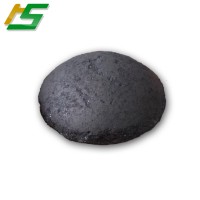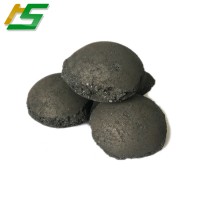The quality of the nodularizer is an important factor in determining whether ductile iron can stabilize production. High-quality nodularizer must have: chemical composition is stable, small fluctuations; alloy high purity, low MgO content; alloy tissue density; uniform and reasonable particle size distribution.
1. chemical composition
The chemical composition of the nodularizer should be stable and small, otherwise it will seriously affect the quality of ductile iron production stability. Ingredients in particular pay attention to the fluctuations of Mg, RE value. GB standard for each grade in the Mg, RE content of the allowable deviation of ± 1%. The primary content of the evaluation of the nodularizing agent is that the actual content of Mg and RE in the nodularizer deviates from the magnitude of the nominal content. Generally good ball agent, the deviation should be controlled at ± 0.2% to ± 0.3%. It is important to say that the type and proportion of REs in the nodulizing agent supplied by the noder manufacturers is stable and reliable, and it is important for ductile iron manufacturers. For example, a factory has made a comparative test, the ballifier RE only different, respectively, a single Ce and Ce + La, the results of Ce + La significantly increased the number of graphite balls, shrinkage tend to reduce.
2. MgO content
The spheroidizing elements in the nodularizer must be active. If they are oxidized or vulcanized, they will lose their ability to spheroidize. Therefore, in the production of nodularizing agent, to avoid the ball is oxidized or vulcanized. Oxidation, the stronger the degree of vulcanization, the worse the ballification effect of the nodularizer. Therefore, in the production of nodularizing agent, the nodular MgO content to give special attention.
However, according to the results of MgO test of nodulizing agent produced by many high-quality nodularizing agent manufacturers and the actual use of ductile iron manufacturers, MgO control<0.50% can obtain the required effective magnesium Quantity, is conducive to the stability of the quality of the ball. Shengda University of Shengda that the nodular magnesium oxide content changes with the magnesium changes, with a single 1.0% magnesium oxide content control of all nodularizing is not appropriate, the control index should be changed to MgO% / Mg % ≤0.1 + 0.02.
3. Fracture density
Observe the nodular fracture, you can visually distinguish the advantages and disadvantages of the ball agent. (See Figure 1a). The poor density of the spheroidizer is poor, and there are air bodies such as air shrinkage, slag and slag, and the cross section is dark (see Fig. 1b).
Alloy ingot fracture to be dense, do not appear a wide range of shrinkage, pores and slag, otherwise the alloy density will be reduced. Alloy density decreased, the alloy has not been melted before the floating to the liquid, the outbreak of intense, not only affect the quality of the ball, but also affect the safety.
4. Granularity and density
The particle size of the nodularizing agent is an important factor affecting the reaction rate and needs to be allowed by the user. The size of the nodularizer is mainly related to the amount of molten iron treated at one time (see table). In addition, it is also related to the shape of iron liquid bag, the degree of nodularizing agent, and the temperature of molten iron. In general, the particle size is too easy to cause early explosion and floating; grain size is too small, in the iron liquid temperature is insufficient, easy to end the end of the package. The above two cases, have affected the rate of nodularizer, affecting the stability of the ball. Note that the size is too small, especially the powder darnizer in the production can not be applied. Under normal circumstances, excessive ballification dose should be less than 10%.
The size of the nodular agent directly affects the yield of spheroidizing elements. Spheroidizer density is small, then in the molten iron floating speed. Floating in the iron liquid surface of the nodularizer, magnesium gasification and oxidation burns increased, especially the molten iron temperature is high, the ball agent density and small, very easy to produce spheroidized recession.
In addition, it was suggested that the phase of the nodularizing agent can be used as one of the basis for quality testing. As a kind of intermediate alloy, the chemical composition of the intermediate alloy, the melting process, the cooling rate of the alloy ingot and the metallogenesis of the nodular agent have a corresponding relationship, the microstructure is different, its performance will be different (mainly refers to the outbreak Of the intensity). The nodular Si-Mg phase in the shape of many, generally can be divided into three categories: group, spherical and slats, as shown in Figure 2. Its shape, size, quantity and distribution directly affect the release behavior of Mg in molten iron. In the actual use of the process, we found that the same component of the nodularizer in the use and metallographic are different, Figure 3 is the gold alloy contrast agent. But the main problem encountered is the absence of sample preparation and metallographic assessment of the relevant provisions.



